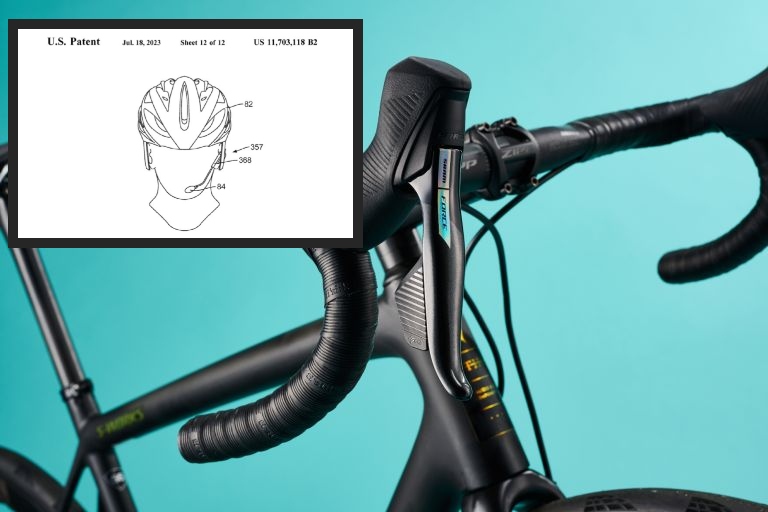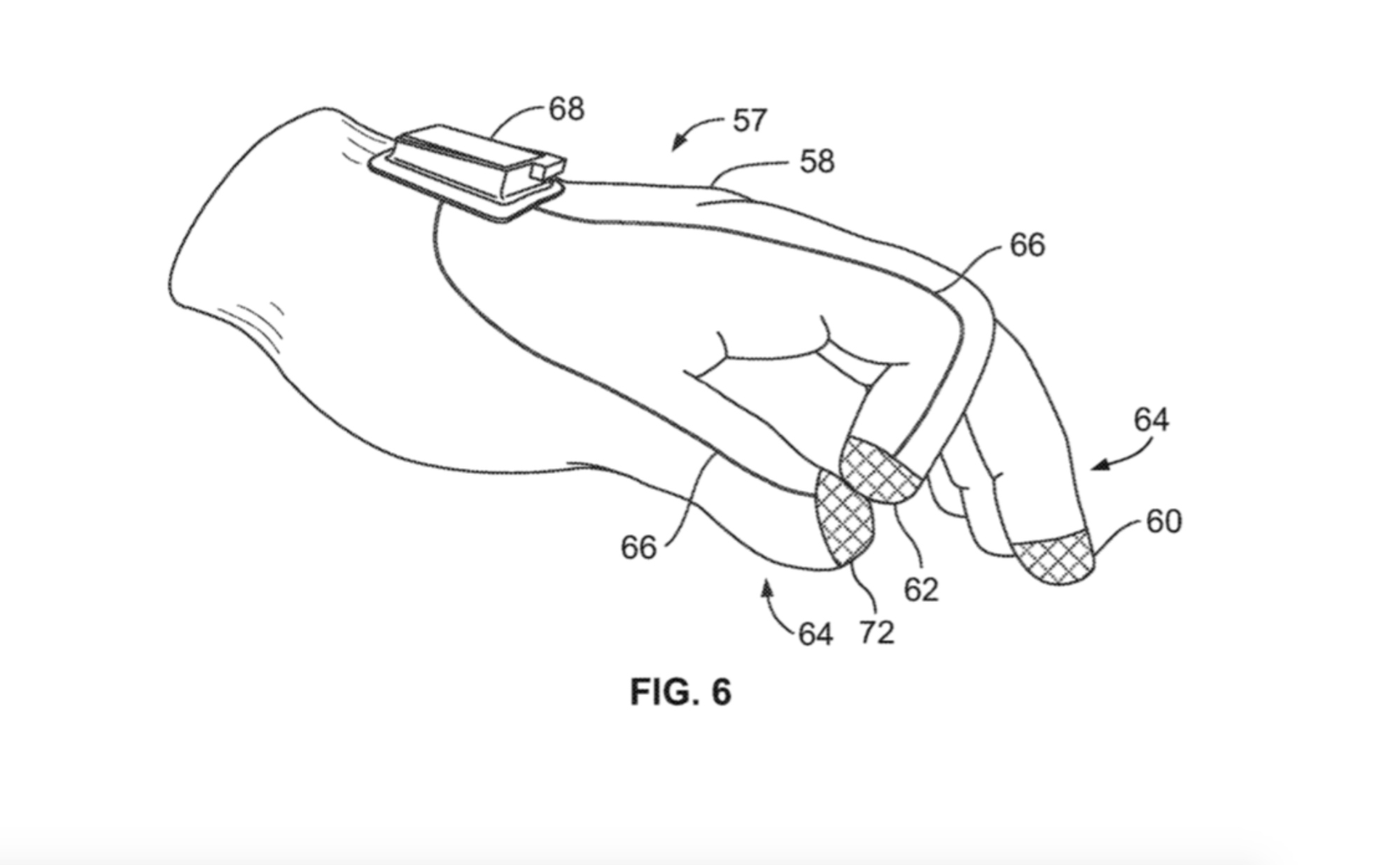Does voice operated gear shifting solve an invented problem or break down barriers to cycling?
Probably not an innovation suited to tightly packed pelotons, but perhaps a simple 'shift down' command could help more beginners feel comfortable on the bike

Voice operated shifting is an innovation we never imagined ourselves referring to - but it could be on the cards, according to a new patent filed by US groupset manufacturer SRAM. The new technology described by the patent looks to simplify existing wireless shifting systems, with either a voice operated function or a wearable device in the form of a cycling glove.
The patent describes “shift control devices” that “provide a means of wireless control of multiple devices without the rider changing hand positions on the handlebar”.

Diagram from U.S. patent document showing SRAM's potential voice activated shift device
Detailing the use-case for such a system, the patent outlines potential issues which could arise when “the rider has their hands in a location remote from the control switches”. In this scenario, SRAM says, in order to shift the rider has to move one hand to the shift button, leaving them to control the bike temporarily with the remaining hand.
For experienced cyclists this is likely to be an issue of little concern. But could SRAM be onto something for newer recruits? Navigating traffic while trying to change gear using unfamiliar technology can be off-putting, so making it as straightforward as possible would likely have plenty of appeal and perhaps even get more people out on the bike, especially as a means of transportation.

Diagram from U.S. patent document showing SRAM's proposed glove design containing a 'shift device'
So what do the proposed inventions look like?
It’s worth remembering this is a patent only, with the 19-page document full of maybes and wooly phrases such as “aspects of the invention contemplate a bicycle shifting system”. However, the ‘aspects’ described detail shift control devices that are located not on the handlebar but on the rider themselves.
While SRAM’s current wireless eTap technology, used across its range of AXS groupsets, is credited for being intuitive and easy to operate (shift buttons on each brake lever move the rear mech up or down, while pushing them simultaneously moves the front mech), technically, it still falls foul of the problems described above. Moving the shifters from bike to rider enables, in theory, for both hands to remain on the handlebars.

The diagram from U.S. patent document shows SRAM's glove invention with shift device in action
SRAM first describes the shift device being worn on the hand, allowing the shift to be executed through the movement of the fingers. To prevent rogue shifts, SRAM says these can’t be movements “encountered in the normal course of riding a bicycle”. Instead it suggests flicking of the index finger, touching the thumb and any of the other fingers together, hyperextension of any of the fingers and compression of the tips of the fingers. All would be achieved, SRAM says, through single-button shifting, which is in effect the same system used in its AXS groupsets.
According to the document, the wearable device would include a shift sensor that generates “control signals responsive to the input signals”, which are then transmitted to the electromechanical derailleurs.
Diagrams show a glove, which SRAM says could support the control device using sensors on the fingertips. To allow for washing the “sensitive electronics” could be removable or in another description they are separate from the glove itself with the option of attaching the device directly to the rider’s hand. As with most patents there are plenty of possible suggestions wrapped up in hard-to-decipher language that can read like little more than speculative approaches to the layperson.
Given the ambiguity and sheer volume of ‘maybes’ in the document it’s difficult to draw any real conclusions on the potential of the glove. At times it sounds feasible, with some genuine upsides, while at others it appears a little like a Doc Brown invention, creating solutions for problems that don’t really exist.
Another ‘embodiment’ of the wireless device detailed in the document sees it worn on the cyclist’s helmet. Here the sensor is a microphone, making the shifting voice activated. The device is programmed to respond to commands such as up and down or “one, two, three, four” to allow for the required direction and number of shifts.
With voice-activated technology already commonplace, from Amazon’s Alexia to Apple’s Siri, requesting a gear change out loud would arguably be second nature to many, even if they are new to cycling. It would also address SRAM’s reason for the invention in the first place, that of keeping cyclists' hands on the bars and their eyes on the road. So more valid than the glove? Quite possibly.
The document also stresses that the system could also have the potential to be applied to areas beyond gear shifts, including the operation of suspension systems and lights, power meters and GPS units.

Thank you for reading 20 articles this month* Join now for unlimited access
Enjoy your first month for just £1 / $1 / €1
*Read 5 free articles per month without a subscription

Join now for unlimited access
Try first month for just £1 / $1 / €1
Get The Leadout Newsletter
The latest race content, interviews, features, reviews and expert buying guides, direct to your inbox!
Luke Friend has worked as a writer, editor and copywriter for twenty five years. Across books, magazines and websites, he's covered a broad range of topics for a range of clients including Major League Baseball, the National Trust and the NHS. He has an MA in Professional Writing from Falmouth University and is a qualified bicycle mechanic. He has been a cycling enthusiast from an early age, partly due to watching the Tour de France on TV. He's a keen follower of bike racing to this day as well as a regular road and gravel rider.
-
 'This is the marriage venue, no?': how one rider ran the whole gamut of hallucinations in a single race
'This is the marriage venue, no?': how one rider ran the whole gamut of hallucinations in a single raceKabir Rachure's first RAAM was a crazy experience in more ways than one, he tells Cycling Weekly's Going Long podcast
By James Shrubsall
-
 Full Tour of Britain Women route announced, taking place from North Yorkshire to Glasgow
Full Tour of Britain Women route announced, taking place from North Yorkshire to GlasgowBritish Cycling's Women's WorldTour four-stage race will take place in northern England and Scotland
By Tom Thewlis